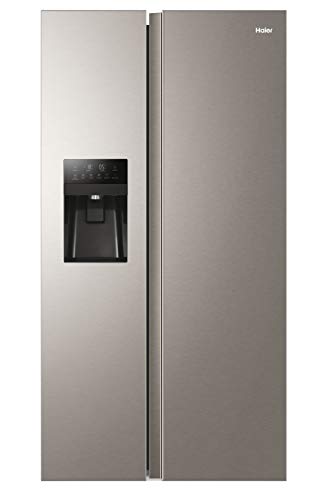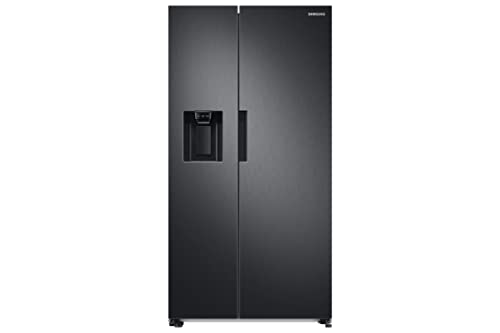 The History of the Refrigerator
The History of the Refrigerator
The conventional refrigeration of food generates a significant amount of greenhouse gas emissions resulting from refrigerant leakage and the use of electricity. In 2019, these emissions made up 3.2 percent of total UK territorial GHG emissions.
 1959 was the first time that fridges became a staple in British homes. Prior to 1959, the majority of British households relied on cold slabs stored in the pantry. These were inefficient and did not maintain a constant temperature.
1959 was the first time that fridges became a staple in British homes. Prior to 1959, the majority of British households relied on cold slabs stored in the pantry. These were inefficient and did not maintain a constant temperature.
The History of Fridges In The UK
Fridges are essential kitchen appliances that help us keep food and beverages fresh for several days. They’re also extremely energy efficient. It’s easy to forget that refrigerators were once considered luxury, but. It wasn’t until the 1950s that they began to gain popularity. However, even then it took a very hot summer for them to become popular in the UK.
Before refrigerators were invented, people used insulated iceboxes in order to keep their food cool. They would harvest blocks of ice from lakes in the winter, and then keep them in storage throughout the warmer seasons. However, these ice containers weren’t ideal. They were carried around by an iceman and were heavy. The first electric refrigerators appeared into the market in 1918, but it took some time before they became widely used in homes.
The energy efficiency of fridges has increased dramatically over the years. They use less power than they used to a decade ago, and some fridges use as little as 4 kW*h per day (equivalent to 170 W continuous). A lot of domestic refrigerators come with an A+ energy rating.
In the early 1950s manufacturers introduced refrigerators with separate freezer compartments. They also began making models with a chrome-finish which was extremely popular at the time. Since then, refrigerators are offered in a variety of colors and finishes. In the 1960s, pastel shades like turquoise and pink were extremely popular. Earth tone colors, like avocado green and almond, were becoming more popular in the 1970s and the 1980s. In the 1990s, stainless steel was becoming popular.
Fridges in the 1920s
Before refrigerators were invented, people used insulated wooden “ice boxes” to keep food and drinks fresh. Ice men would bring blocks of ice to fill them, and they kept things cool throughout the year. These ice boxes were generally found in the kitchens of wealthy households.
In 1918, the first electric refrigerator was released. It sat atop of the ice box that was already in a house. They were noisy, bulky and costly. They were also known as monitor-tops because of their motors on top of the refrigerator cabinet. William C. Durant purchased the Mellowes Refrigerator Company in 1918 and founded the Guardian Frigidaire to mass-produce refrigerators. Durant was influenced by a design created by Cistercian Monk Marcel Audiffren, and Swiss Engineer Albert Singrun. It was a sulfur dioxide absorption refrigerator.
In the 1920s, these new refrigerators became affordable for many homes. These refrigerators could store much more food and drinks and kept them cooler for longer time than the older ice boxes.
The advertisements on refrigerators were imaginative attractive, appealing and filled with promises of ice cold beverages and stylish designs. These ads from the past are fascinating to read since they offer us a glimpse of the lifestyle of the time.
At the time of the 1920s, electric refrigerators were in almost all homes. Electric utilities encouraged this trend by offering discounts on their bills to customers who bought refrigerators. During the Great Depression, these appliances were considered essential to home survival and their popularity increased.
fridges & freezers in the 1950s
The popularity of refrigerators increased in the 1950s. They were still uncommon in the 1920s. In the 1960s they were a common feature in most homes.
The first fridges were utilitarian and simple appliances that fit in with kitchen decor. The refrigerators were typically smaller and had legs. They were available in a range of colors (though most were pastels like mint). In the time of this, there were a number of companies manufacturing fridges freezers that included Whirlpool (who had just emerged as a leading brand), Gibson, Hotpoint and Tappan.
These brands were known for high-quality and reliable refrigerators. They also expanded their product lines, providing other types of household appliances. For example, Crosley was a manufacturer of radios prior to their move into refrigerators in the 1940’s and were famous for their small refrigerators that fitted well in smaller areas.
In the 1950s, refrigerators were more fashionable and were sold to women who were housewives to be a status symbol. They were designed in a manner that was in line with the cabinets and the walls of the kitchen, and were usually white with chrome handles.
In the 1960s, refrigerators started to evolve into gadgets that included separate freezers and ice cube makers. In addition manufacturers began using cheaper materials and were able to offer the fridges at lower costs.
Fridges in 1960s
The fridge was a necessity in most households during the 1960s, with a lot of families having two fridges. In the 1960s, the average American fridge cost $600 (roughly $7000 in 2024 dollars). At the close of the decade, the cost had dropped to around $200.
The refrigerator was a major breakthrough at the time, transforming kitchens and transforming the way we preserved food. The cheap fridge uk – More suggestions, also improved the comfort of homes as it helped keep meat and dairy fresher for longer, allowing people to purchase in bulk and prepare meals ahead of time, and then put them away for later.
The first refrigerators were made of toxic gases like ammonia, sulfur dioxide and methyl chloride to cool food. This was dangerous for humans as these gases leaked out of the refrigerators. A number of people died from poisoning, and it was only in 1929 that a safe method of cooling food, using carbon dioxide, was invented.
This means that manufacturers were able to design more efficient and safer refrigerators that could be used in homes, with some refrigerators having an inside freezer compartment that was accessed through the refrigerator’s door. These were known as bi-door refrigerators, and were extremely popular during the 1950s and 60s.
The 1960s fridges were sleeker and more modern. They were curved with soft curves and a sleek style that reflected an era of efficiency and home freedom. The refrigerators were still big, but the boxy design of the 1940s was fading.
Refrigerators Today
Modern fridge freezers come in a variety of colors and styles that can be customised to fit your kitchen and personal style. Some have sophisticated features that connect to Wi-Fi, providing an easy way to alter the settings, and some have a built-in camera for monitoring your fridge freezers uk sale from any location.
French door models have taken over the market, since consumers are looking for modern designs and features like water or ice dispensers, flex drawers and in some cases, a smart display. Many of these appliances are also classified as A, B or even A+ for energy efficiency following the overhaul of the labelling system that is mandatory in UK appliances.
We like this Hotpoint model for its sleek design, which features a clever UVNano technology that self-sterilizes the fridge to kill bacteria and two salad drawers with adjustable humidity sliders. It’s also spacious, with plenty of space for jars, bottles and a generous storage compartment for the door of the large fridge freezers uk.
Fridges that don’t have an ice tray of the traditional type can consume up to four times more power than those with ice makers, so look for those with an eco-friendly ICE+ option that uses less energy. You can also save more money by selecting one with an automatic ice maker. This will ensure an ongoing supply of ice ready to be used in the morning.
The best thing you can do to help the environment is to buy fridges with an energy efficiency rating of either A or A+. When selecting a refrigerator, it’s recommended to include the annual electricity consumption of the refrigerator in your budget for household expenses. It is important to remember that we can’t afford to take electricity for granted. Everyone deserves to have access to affordable, reliable and abundant electricity to lead a healthy lifestyle, be comfortable, and protect the planet.
